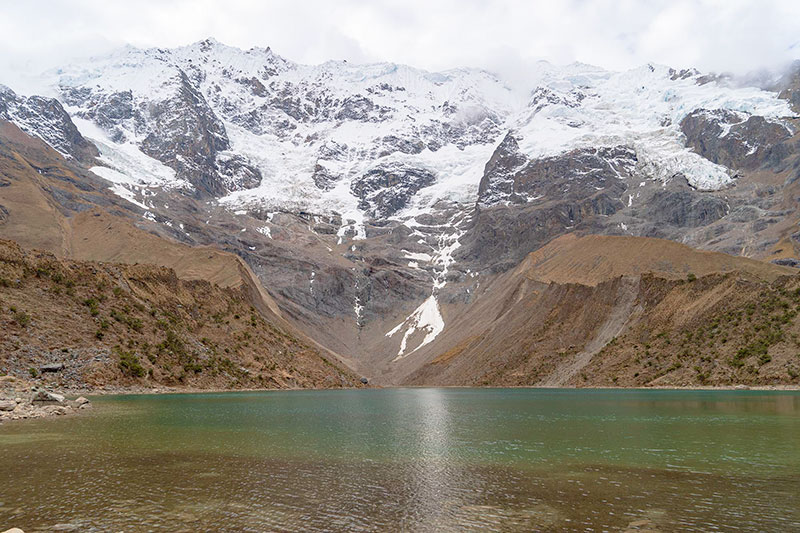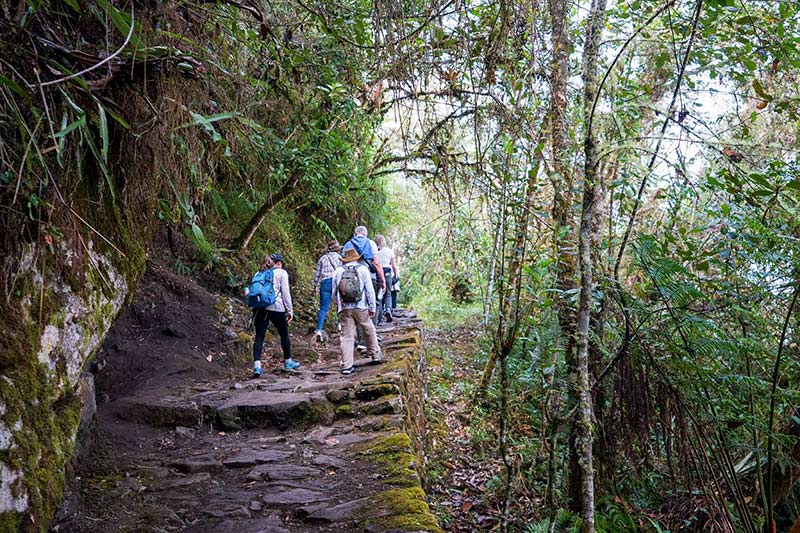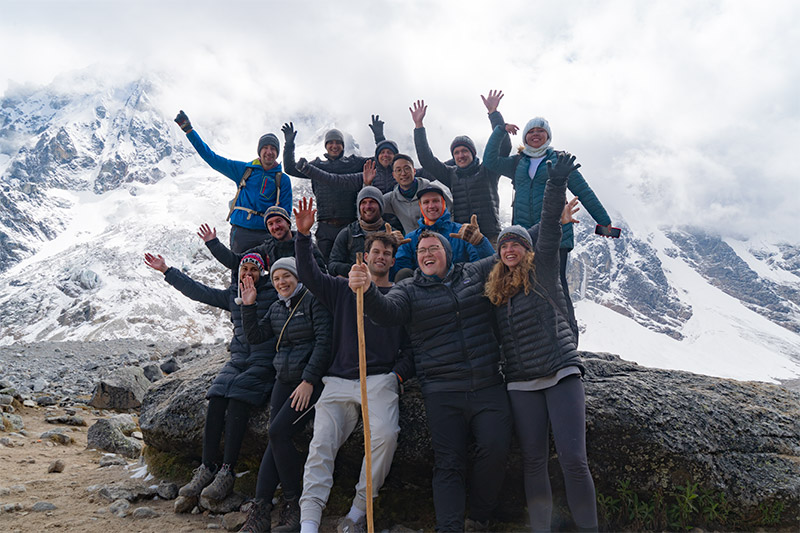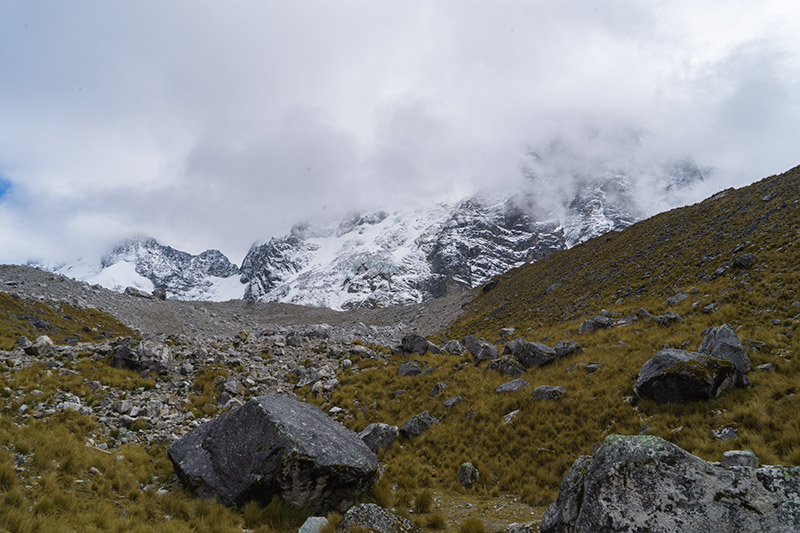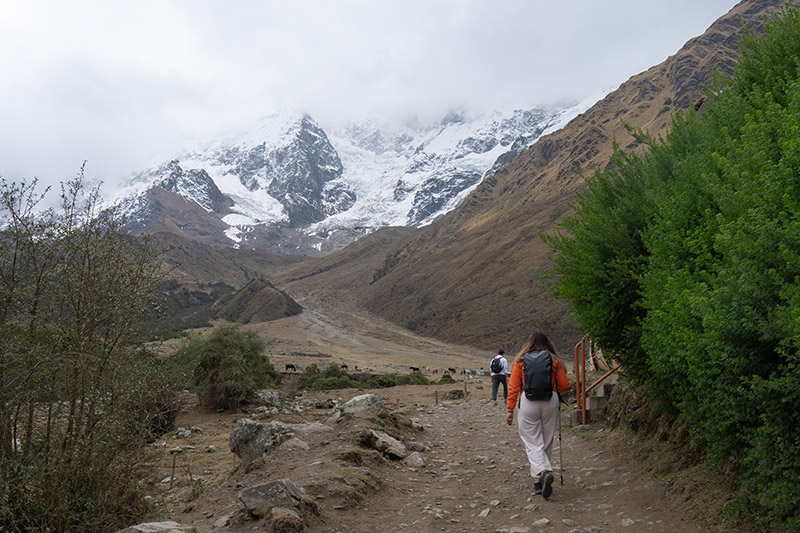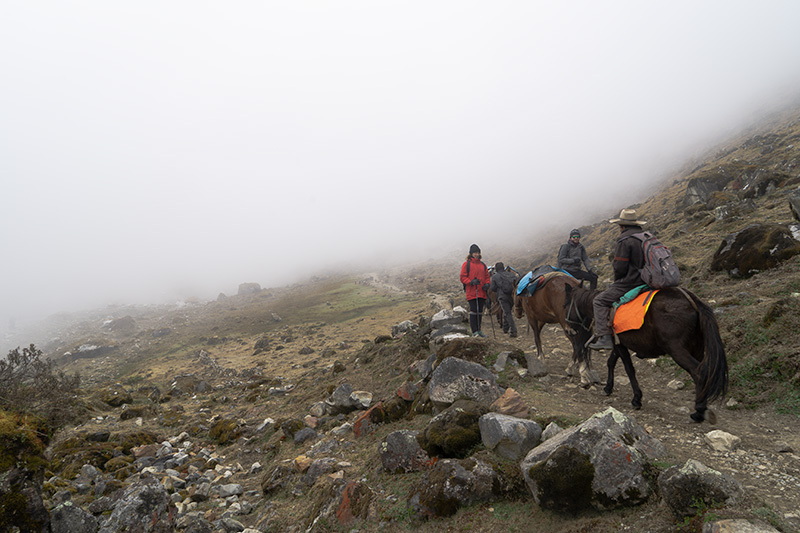Salkantay Trek: the alternative Inca Trail to Machu Picchu
The Inca Trail is a 4-day trekking route to Machu Picchu. This adventure is a favorite among tourists because of the beauty of the places it passes through before arriving at the Wonder of the World. Currently, the Salkantay Trek is a great alternative to this trekking route mainly because it goes through even more incredible landscapes than the Inca Trail. Places like the imposing snow-capped Salkantay (6,271 m.a.s.l.), are one of the highest in Peru and considered one of the most revered sacred peaks by the Incas. Learn more about this 5 days and 4-night trek, considered one of the most memorable ways to reach the Inca Citadel.
- What is the Inca Trail?
- And what is the Salkantay trek?
- Difference between the Salkantay trek and the Inca Trail
- How is the Salkantay trek day by day?
- Does the Salkantay trek include climbing the snowy Salkantay?
- Recommendations to do the Salkantay trek
What to choose the Salkantay trek tour or the Inca Trail tour?
Both the Salkantay trek and the Inca Trail are considered the best trekking routes in Cusco. Both offer beautiful landscapes, historical sites, and, in the end, the visit to Machu Picchu. The Inca Trail, being a route protected by the Peruvian State, runs along Inca trails (qhapac ñan) and can only be done with a tour. The Salkantay trek, being open landscapes and free for all, can be done with a tour or on your own. The Inca Trail is recommended for the whole family. The Salkantay trek, for young and old. These are two amazing treks in Cusco, Peru.
What is the Inca Trail?
- The Inca Trail to Machu Picchu is the most popular trekking route to the Inca Citadel.
- It is a 4-day, 3-night hike along the ancient network of Inca trails leading to the Sun Gate (or Intipunku), the way the Incas arrived at the Wonder of the World more than 600 years ago.
- It is currently considered one of the top 5 hiking trails in the world. It covers 39.6 kilometers of high Andean landscapes such as the pass of the dead woman (Warmiwañiusca), at 4,200 m.a.s.l. and then descends to the eastern part (jungle brow) of the Andes, characterized by abundant flora and fauna.
- On the way, the tourist appreciates archaeological sites such as Saycamarca, Wiñay Huayna, and finally the Inca citadel of Machu Picchu.
- The difficulty is considered moderate-high. Per day, only 500 visitors can walk this ancient network of Inca trails. Of these, only 200 are tourists, the rest are porters and guides. It is advisable to book online (through a tourist agency) up to 6 months in advance.
- Another option is to do the 2-day Short Inca Trail.
And what is the Salkantay trek?
- The Salkantay Trek is an alternative route to the Inca Trail to Machu Picchu.
- It is a trek of 5 days and 4 nights to the Inca citadel through the town of Aguas Calientes, located at the foot of the Wonder of the World.
- On the route, you will cross even more impressive landscapes than the Inca Trail. Places like the snow-capped Salkantay, whose summit is at 6,721 meters above sea level and whose slopes the tourist crosses at 4,572 meters above sea level.
- Also visited are sites such as the beautiful Mollepata Valley, the ruins of Llactapata, and tropical territories where flora and fauna abound.
- The last stretch is parallel to the Vilcanota River until you reach Aguas Calientes. From there we ascend on foot or by bus to the entrance gate to the Inca City.
- The Salkantay Trek was chosen by National Geographic magazine as one of the 25 best trekking routes in the world.
- To access this adventure you can hire a tour operator. The other option is to do it on your own. This requires experience and the necessary care.
- There are some variants to this adventure, which begin the route at different points. For example, there is a short version of 4 days and 3 nights.
Difference between the Salkantay trek and the Inca Trail
Here are some differences between the two best trekking routes in Cusco.
| Differences | Salkantay trek | Inca Trail |
| Duration | 5 days / 4 nights | 4 days / 3 nights |
| Kilometers | 72 Kilometers approx. | 39 Kilometers approx. |
| Weather | Minimum of below 0°C in the ‘Salkantay Pass’ | Minimum of below 4°C in the ‘Warmiwañuska Pass’ |
| Maximum height | 4,572 m.a.s.l. in the ‘Salcantay Pass’ | 4,215 m.a.s.l. in the ‘Warmiwañuska Pass’ |
| Minimum height | 1,800 m.a.s.l. in the town of Santa Teresa | 2,040 m.a.s.l. in the town of Aguas Calientes. |
| Difficulty | Challenging | Challenging |
| How to do it? | With a tour or on your own | With a tour |
| When to do it? | All year round, but recommended during the dry season (April to October) | All year round, but recommended during the dry season (April to October) |
| Places it travels | Mollepata, Soraypampa, Humantay lagoon, ‘Salkantay Pass’, Chaullay, Santa Teresa, Cocalmayo, Aguas Calientes and Machu Picchu. | Llactapata, Runkuracay, Sayacmarca, Phuyupatamarca, Wiñayhuayna, Aguas Calientes and Machu Picchu |
How is the Salkantay trek day by day?
- Day 1: We start with a trip by car from the city of Cuzco to Mollepata (2,803 m.a.s.l.) From there we start trekking through jungle climates, but with views of the snow-capped mountains of the Salkantay chain. After 7 or 8 hours of trekking, we arrive at the town of Soraypampa (3,900 m.a.s.l.) The first day we walked approximately 16 kilometers.
- Day 2: It is the most arduous. It begins with a 2-hour hike to the so-called ‘Abra Salkantay’, the highest point of the trip at 4,572 meters above sea level. The place is located on the slopes of the snowy mountain, which gives a perfect landscape to take the best pictures. After a rest, we descend for several hours into the eastern part of the Andes or jungle and brow to the town of Chaullay (2,800 m.a.s.l.) In total, we travel 22 kilometers.
- Day 3: We cross beautiful landscapes of the high jungle such as waterfalls, tropical fruit plantations, rivers, and abundant vegetation. On the way, we cross the so-called Sahuayaco Beach. That day we descend approximately 16 kilometers of green landscapes until we reach the town of Santa Teresa (1,800 m.a.s.l.). In the afternoon you can enjoy the warm waters of the thermal baths of Cocalmayo.
- Day 4: On this day, the route is parallel to the Vilcanota River. We start by arriving at the hydroelectric station in the area. From there, we follow the railroad lines of the train, which is the route by which most tourists arrive at the Wonder of the World. Finally, after a walk surrounded by nature, you arrive at Aguas Calientes or Machu Picchu village, at the foot of the Inca Citadel. It is a walk of approximately 16 kilometers.
- Day 5: This day is destined to visit Machu Picchu. We ascend very early in the morning to the entrance gate to the Wonder of the World. It is the most exciting moment of the 5-day trip. After appreciating the beauty of the Inca City, we return to the city of Cusco. The return is usually by train.
Does the Salkantay trek include climbing the snowy Salkantay?
- The Salkantay or Salcantay (6,271 m.a.s.l.) is a snow-capped mountain belonging to the Vilcabamba range.
- It is the second-highest mountain in Cusco after Ausangate (6,384 m.a.s.l.)
- Its name means wild mountain. Due to its imposing and isolated appearance, it was highly appreciated by the Incas. They gave it the name ‘Apu’ which means ‘lord’ or ‘sacred’.
- They considered this mountain to be one of the most powerful in the region. They venerated it to the point that they built Machu Picchu given its summit.
- According to the Andean cosmovision, the mountains provided life and decided the sowings, harvests, and even natural disasters.
- Because of this, respect and offerings should be given to them, today, the inhabitants of the Andes continue to consider the mountains as important spirits.
- In Cusco, the Salkantay is as much appreciated as it was by the Incas.
Recommendations to do the Salkantay trek
- The Salkantay trek is the main trekking alternative to the Inca Trail. More and more tourists are encouraged to reach Machu Picchu through this trek of 5 days and 4 nights through amazing landscapes such as the snow-capped Salcantay.
- It is possible to do this trek on your own or with a tour. Due to the difficulty of the adventure, it is recommended to do it with a tour agency. Otherwise, you must have experience in mountaineering.
- Perhaps the main inconvenience for this adventure is the ‘soroche’ or altitude sickness. It is advisable to do a previous acclimatization in the city of Cusco.
- Most tourist agencies include the main equipment such as tents, food, and guides. In case of doing it independently, it is recommended to bring everything you need.
- The cold at the foot of the Salkantay snow-capped mountain is perhaps another of the main difficulties. It is recommended to bring thermal clothing.
- The rainy season (from October to March) is characterized by a higher probability of rainfall. It is not a good climate for trekking.
- In case of doing it on your own, do not forget to book in advance the Machu Picchu Ticket. It is the only way to visit the Wonder of the World.
Advice from people who have been there
 By: Angela M.
By: Angela M.“¡Unforgettable experience!“
“A dream trip. The hike to the snowy Salcantay is impressive. Despite the cold, it is incredible to go through the snowy mountain. It is a climate of pure air and incomparable nature. I would come back a thousand times, highly recommend it!“
By Ticket Machu Picchu – Last updated, August 15, 2024
